DTC P3023: Hybrid Battery Assembly Issues
In the realm of automotive diagnostics, the dreaded DTC P3023 can send shivers down the spine of hybrid vehicle owners and technicians alike. This diagnostic trouble code, often associated with hybrid battery assembly malfunctions, demands careful attention and swift resolution to ensure optimal vehicle performance and longevity. Let’s delve into the possible causes, effective fixes, and associated costs of tackling the elusive P3023 code.
Troubleshooting DTC P3023
DTC P3023 signifies a fault within the hybrid battery assembly, a critical component in hybrid vehicles responsible for storing and delivering electrical energy to power the electric motor alongside the internal combustion engine. When this code emerges, it indicates a deviation from expected parameters, triggering a warning light on the dashboard and potentially impacting vehicle drivability.
Possible Causes of DTC P3023
Hybrid Battery Degradation: Over time, hybrid batteries can experience degradation, leading to diminished performance and triggering fault codes like P3023.
Cell Imbalance: Discrepancies in cell voltage or capacity within the hybrid battery assembly can trigger the code, highlighting issues with cell health or balancing systems.
Temperature Extremes: Exposure to extreme temperatures, both hot and cold, can accelerate battery degradation and increase the likelihood of fault codes like P3023.
High Mileage: Vehicles with high mileage may encounter hybrid battery issues due to prolonged usage, contributing to cell degradation and eventual fault code activation.
Manufacturing Defects: In uncommon instances, manufacturing flaws or quality control problems within the hybrid battery assembly can appear as DTC P3023.
How to Fix DTC P3023
Addressing DTC P3023 necessitates a systematic approach and, in certain instances, professional assistance. Below are potential solutions:
Battery Health Check: Conduct a comprehensive evaluation of the hybrid battery assembly to assess overall health, identifying any cells or modules exhibiting abnormalities.
Cell Balancing: Implement cell balancing procedures to rectify voltage or capacity imbalances within the battery pack, restoring optimal performance.
Battery Replacement: In severe cases of degradation or irreparable damage, replacing the hybrid battery assembly may be necessary to eliminate DTC P3023 and restore vehicle functionality.
Temperature Management: Implement strategies to mitigate temperature extremes, such as shielding the battery from excessive heat or cold, to minimize degradation and prevent recurring fault codes.
Software Updates: In some instances, software updates provided by the manufacturer may address underlying issues contributing to DTC P3023, offering a cost-effective solution.
Cost to Diagnose the Code
The cost of diagnosing DTC P3023 can vary significantly depending on factors such as the vehicle’s make and model, diagnostic equipment availability, and the expertise of the service provider. On average, diagnostic services for hybrid battery-related issues, including thorough inspections and potential battery health assessments, can range from Call to exact price.
In DTC P3023 serves as a crucial indicator of hybrid battery assembly issues, demanding prompt attention and thorough diagnosis to ensure continued vehicle reliability and performance. By understanding the potential causes, effective fixes, and associated costs of addressing this fault code, hybrid vehicle owners and technicians can navigate the complexities of hybrid battery maintenance with confidence, keeping their vehicles running smoothly for miles to come.
